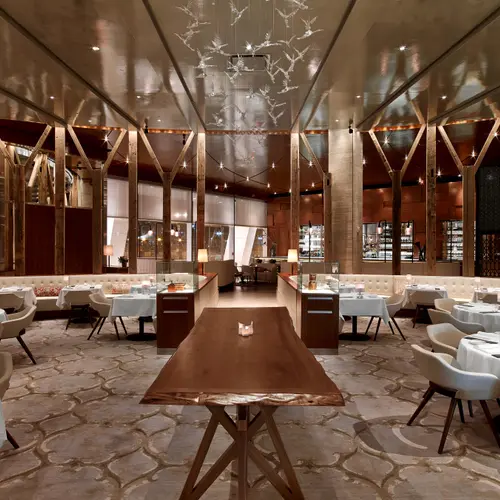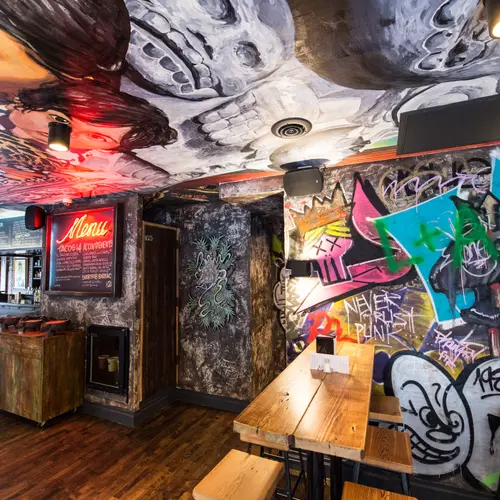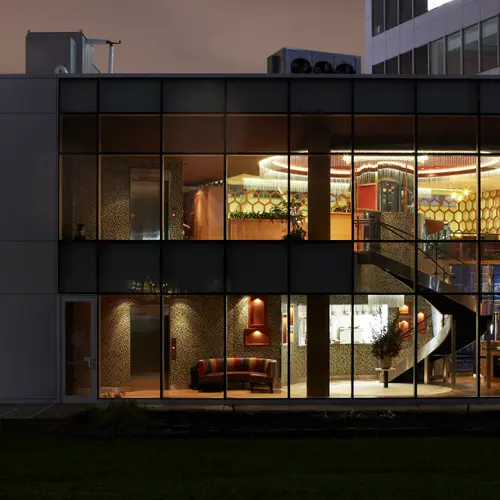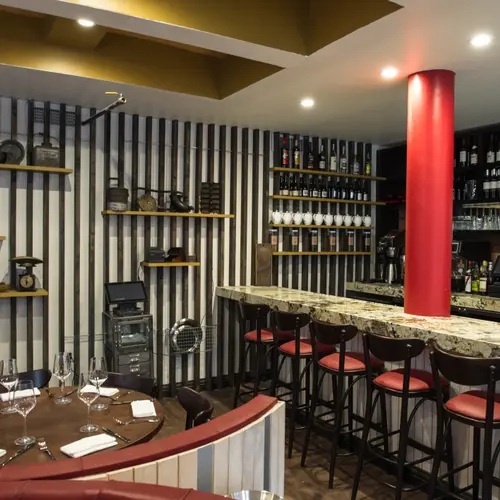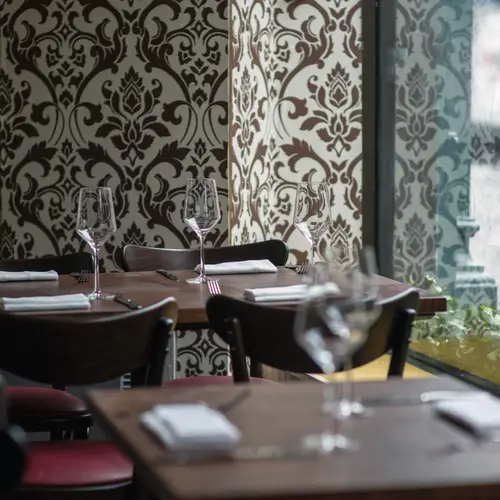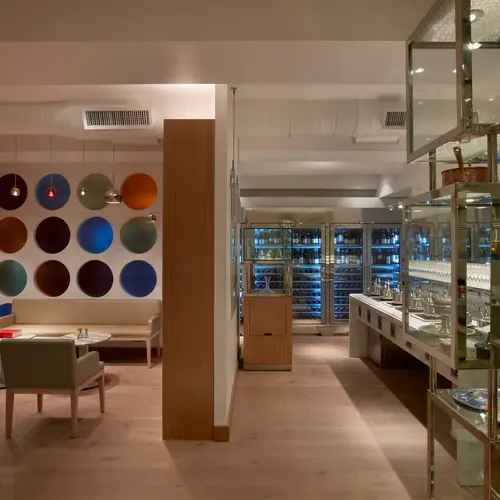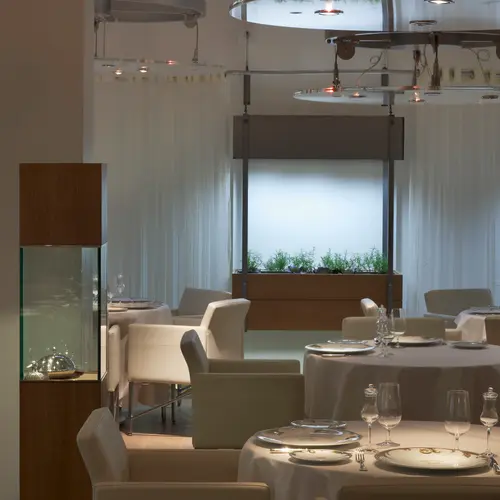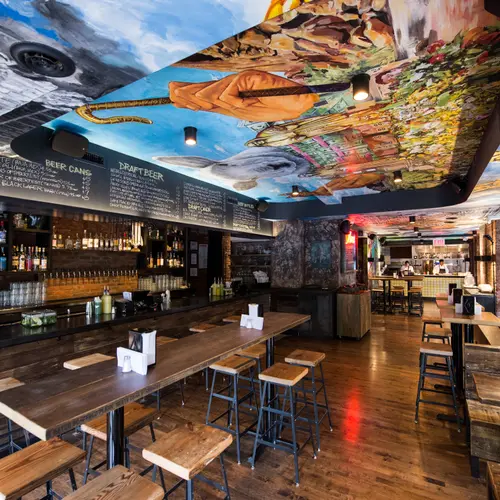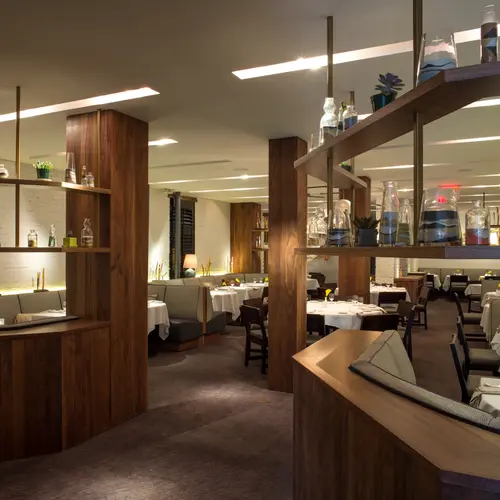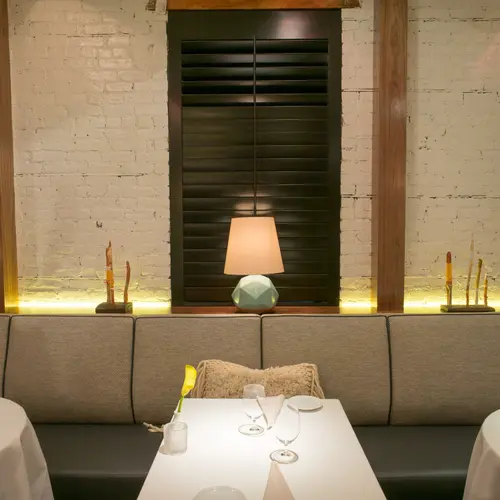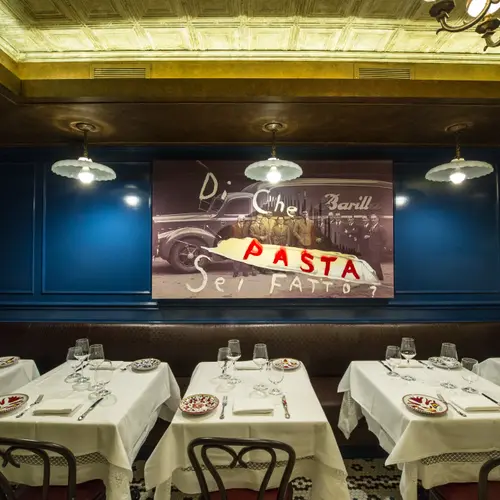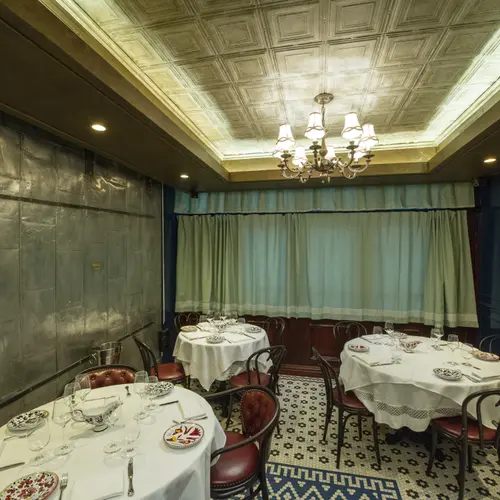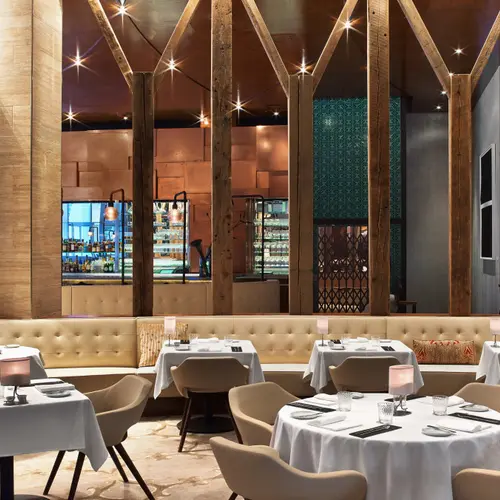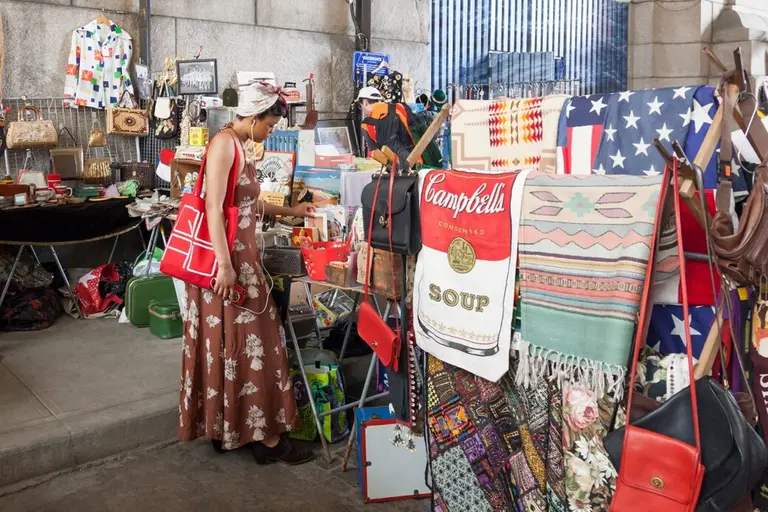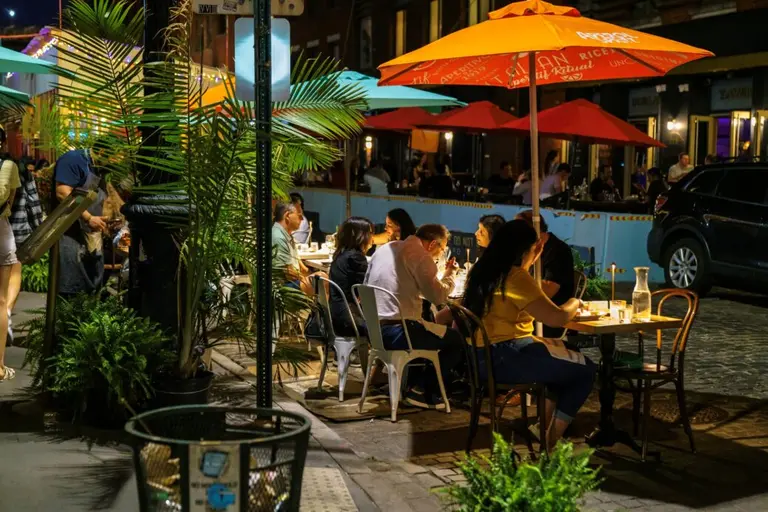INTERVIEW: Architect Glen Coben dishes on his passion for design and restaurants
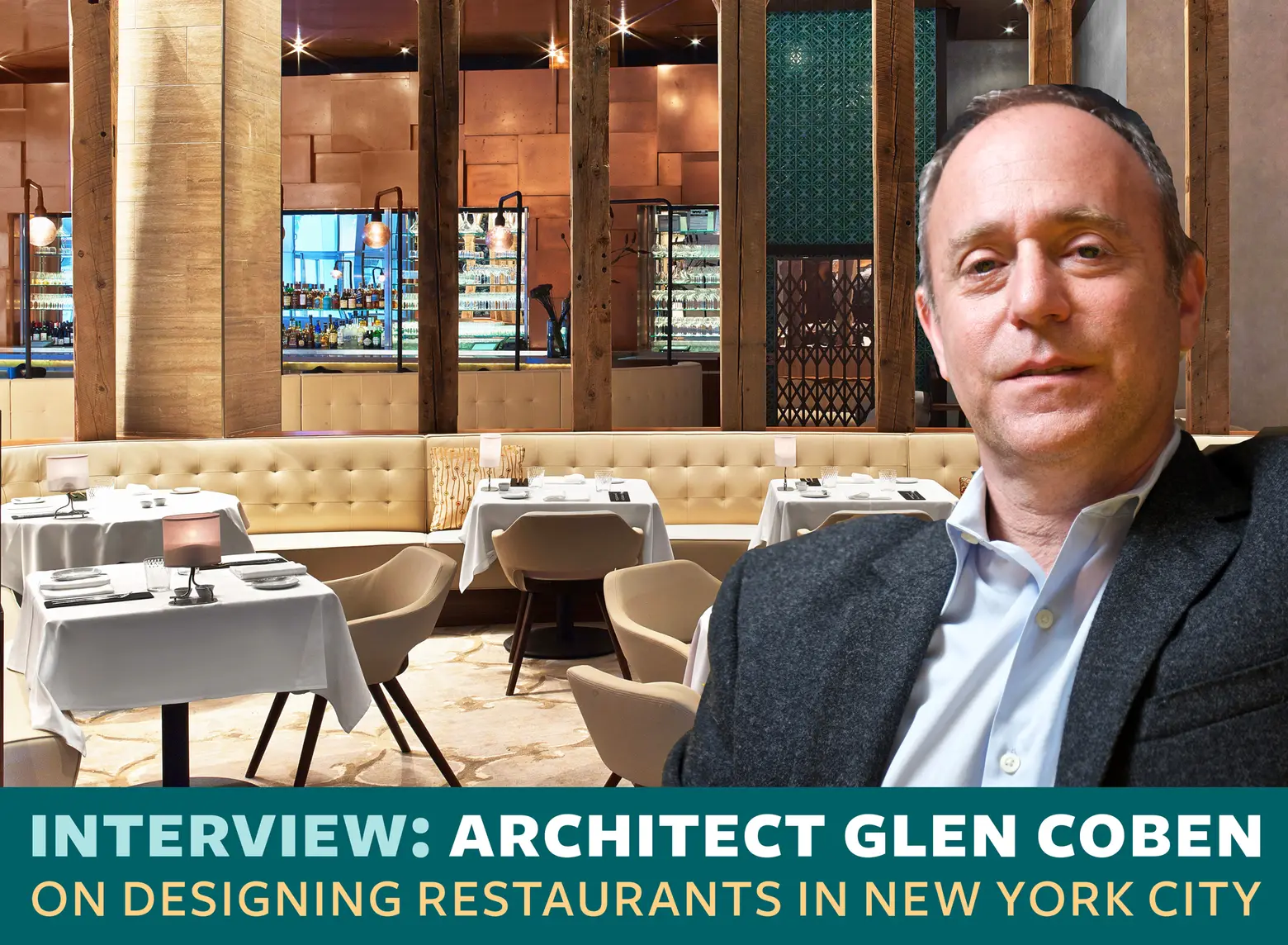
Headshot of Glen Coben via Tommy Campbell, Brothers & Company
New York City architect Glen Coben’s An Architect’s Cookbook: A Culinary Journey Through Design is part journal, part cookbook. The book shares Coben’s experience over the last 18+ years working with some of the world’s greatest chefs to create magical culinary experiences: Empellon/Alex Stupak, Del Posto/Mario Batali, Gabriel Kreuther, Carbone, The Marrow and Romera.
Each chapter includes: the narrative between Glen and Chef – their story together throughout the process, sketches and renderings, followed by the final photos of the restaurant and recipes contributed by each chef. Coben loves what he does and it shows. To him, working with chefs to design their dreams means “there is another creative partner at the table.” 6sqft recently spoke with Coben and learned how it all started, about his restaurant inspirations and what the architectural equivalent of adding that special spice to meatballs is to make us all sigh in delight, ahhhhh.
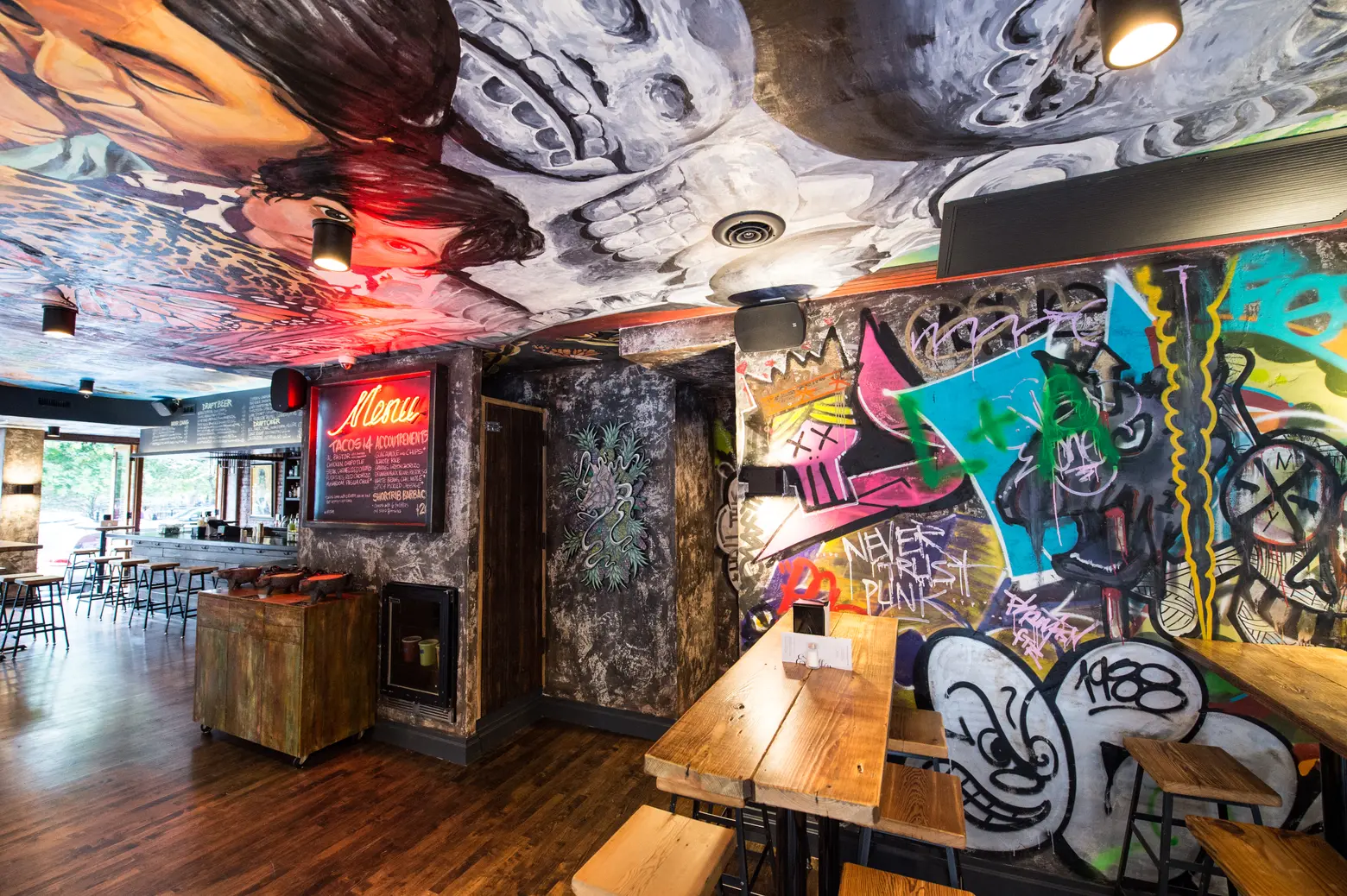
Empellon Al Pastor; photo by Evan Sung
How did you get into designing restaurants?
When I started my own firm 18 years ago, I set out to have a firm that really stayed far away from residential design. At the time, I was introduced to Jonathan Waxman through a friend who was designing kitchens. Jonathan was one of the first celebrity chefs, he had cooked Chez Panisse and came to New York and opened the restaurant Jams. Jonathan is credited as bringing the one who brought California cuisine to New York. like sweet potato fries and sweet potato pancakes with creme fraiche. He was reacting to the French dominance in New York. I knew a little about restaurants, principal at the Rockwell group before starting my own firm. I always loved the idea of restaurant design so when I first met Jonathan, it really aligned in my mind where I wanted to take my firm.
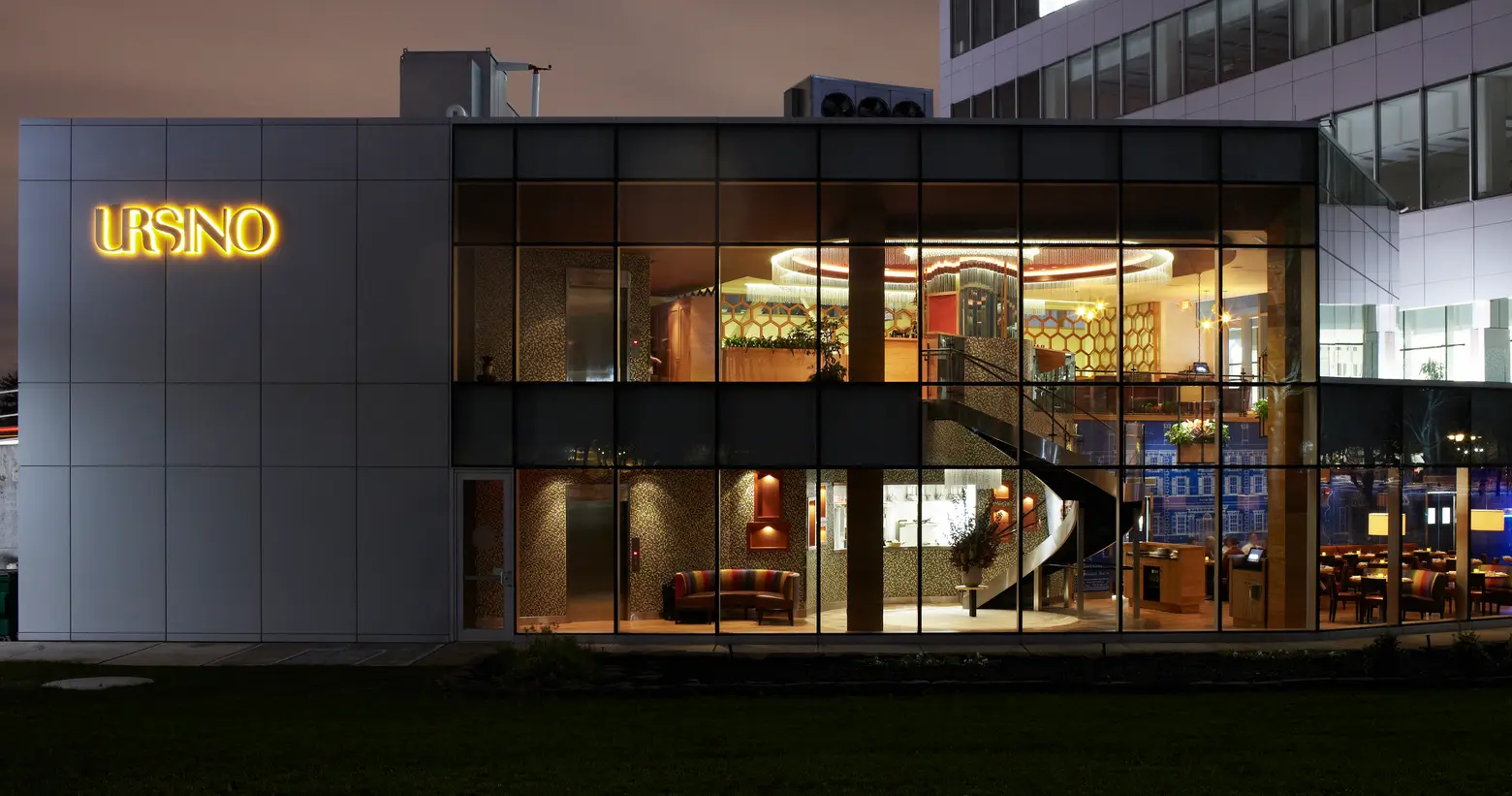
Ursino; photo by Bjorn Wallander Studio
To me, hospitality aligns with the architecture profession because it is a service industry. The more I could learn from these incredible restaurants and chefs, the more I could focus my firm on the notion of hospitality. It’s thinking about architecture and design as providing a service versus an ego-driven industry. I realize it’s funny to say this because chefs are all about the ego-driven industry. But the fact that architecture and interior design are so closely aligned with the act of menu creation and restaurant creation, means that the relationship between the design and chef is going to be amazing. That is what I truly love about what I do, it is the collaboration with another creative.
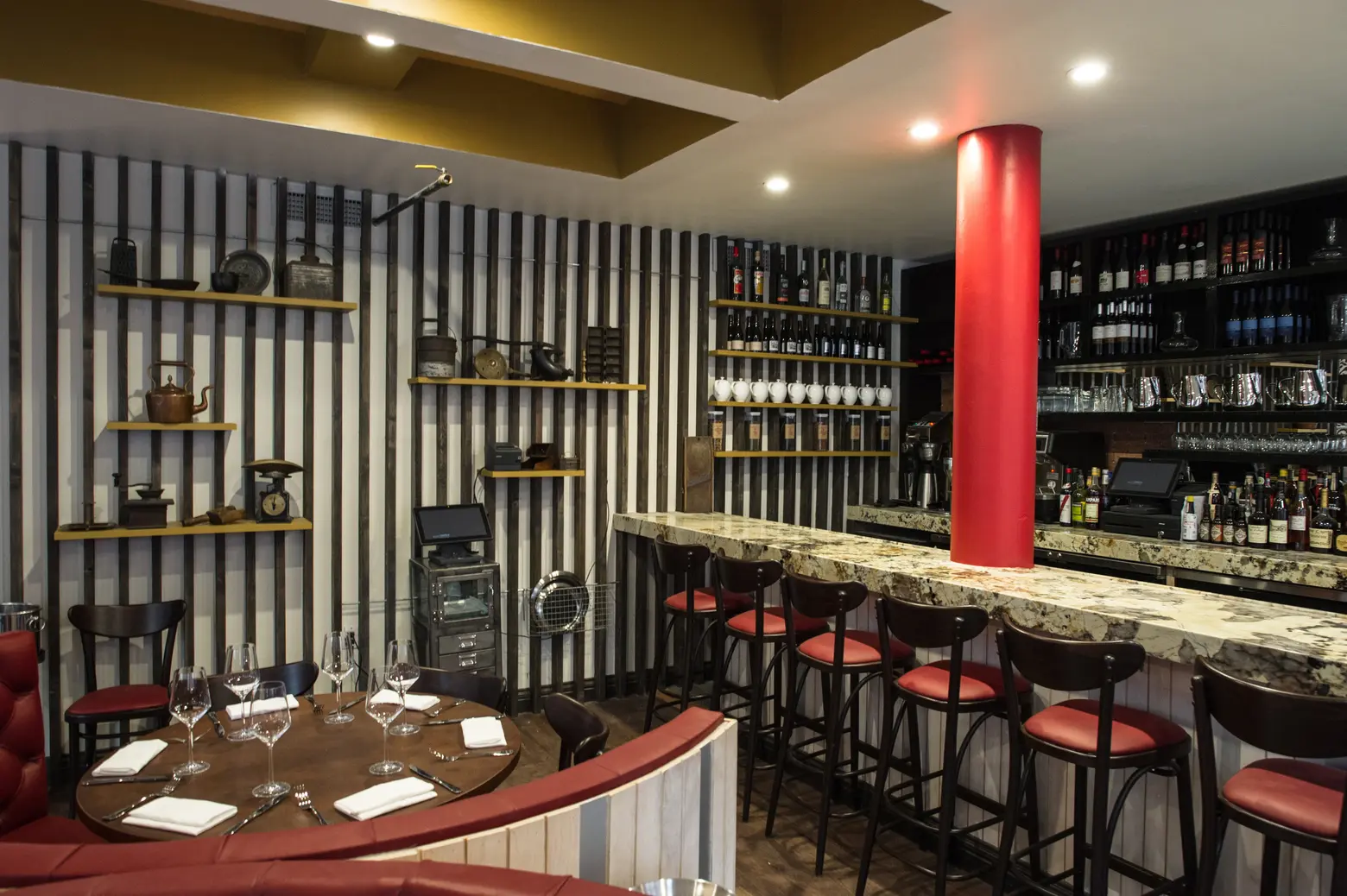
The Marrow; photo by Daniel Krieger
How is working with a chef different than other clients?
For part of my business, we design hotels, gyms, spinning studios, and we’re doing a big food hall right now. Our business is not singularly focused on chefs but it is a phenomenal relationship. I love the interaction and collaboration because there is another creative partner at the table.
I went to an architecture school which was very much about the ivory tower, the architect capital “A”, the master of his or her domain, the Howard Roark figure. While that was really a cool thing, how many Richard Meiers are there going to be in one generation? After I graduated from Cornell, I wanted to understand the other side of the profession, not just doing but collaborating.
James Wines had a collaborative architecture and design company called SITE project. SITE stands for sculpture in the environment. I worked there for five years after graduating from architecture school. It was essentially a rejection of everything I learned at architecture school. You were sitting at a table with people from completely different backgrounds, tastes, and approaches and we were collaborating on some really cool projects.
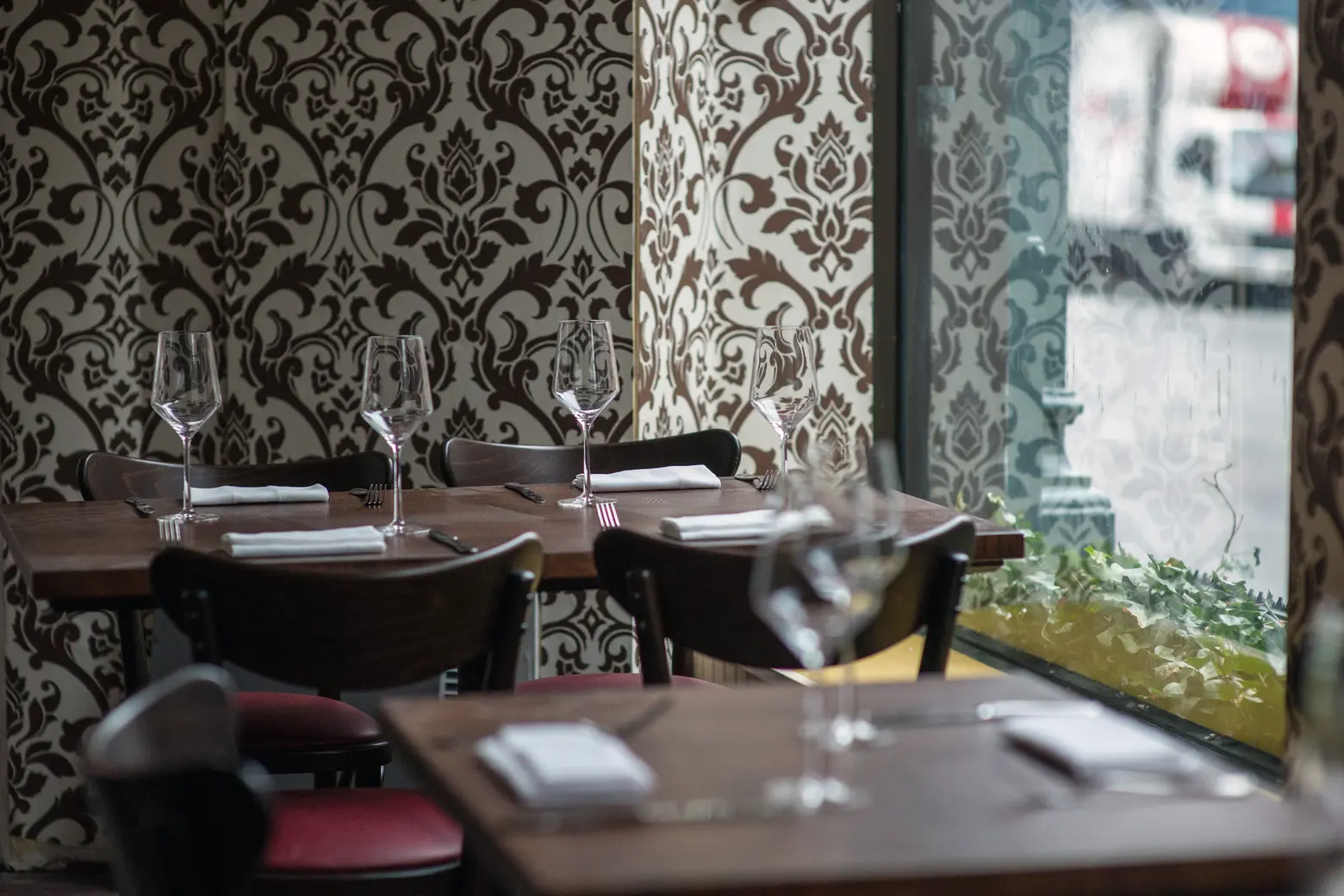
The Marrow; photo by Daniel Krieger
That was the beginning of my career as a storyteller. I see being an architect as a storyteller rather than an architect who is creating these amazing structures that are contextual but not necessarily telling a story about what the project’s mission is. When I design a restaurant, I am telling their story. It is not my story that needs to be told. What is the soul of the restaurant about and how do we get that? Restaurant design is a journey to a restaurant’s soul. The more we understand the chef’s vision and background, the more we can weave together the architecture, design, fabrics, textures, and colors to evoke the spirit. Restaurants are the living and breathing 3D story.
Are there any common, important features all restaurants must have?
Without being too sassy, no. Okay, there’s a front door and a kitchen… but the best way to describe the common element from one restaurant to another this is a restaurant. It is not a work of art or a museum or a gallery or a residence. There has to be a real function to the restaurant. If the restaurant is not solved from back of house standpoint, then the front of house will not work.
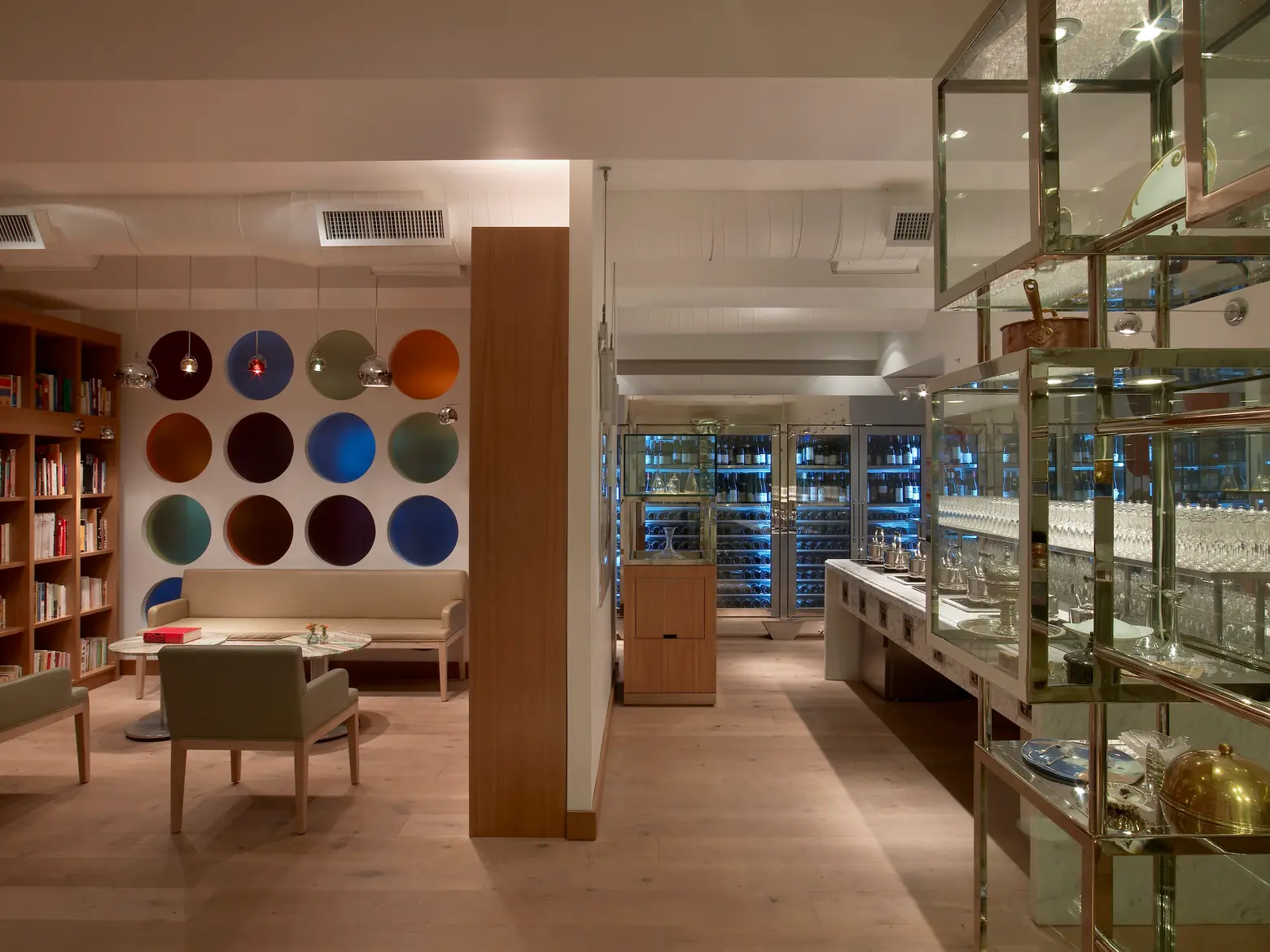
Romera Restaurant; Photo by Oliver Brenneisen
When we first started working on Del Posto, Mario kept saying “I want to see what the restaurant is going to look like.” I would reply, “Chef, until you design the entire kitchen and your program, i.e. how are you going to serve, get from kitchen to dining, etc” we can’t know.” They had very lofty goals about how to bring elevated Italian dining to make a four-star restaurant. They were really looking at a French serving style which required more elbow space. In the French style, there are wood gueridons, serving a lot of different products from carts. We needed to know where the carts would be stored, how they would be used, and if they would be coming from the kitchen, did the kitchen need two doors, how many different setups would be on tables, how many courses, how many glasses what happens when it all gets dirty, does it get broken down before or after it gets to the kitchen? We don’t design the actual kitchen but we have to understand the flow so we can properly design the dining room.
Restaurants are incredibly complicated projects. The ones I love don’t look complicated when they are all done. I love to take restaurant investors through the project before it’s done so they can see just how complicated the projects are to make a reality.
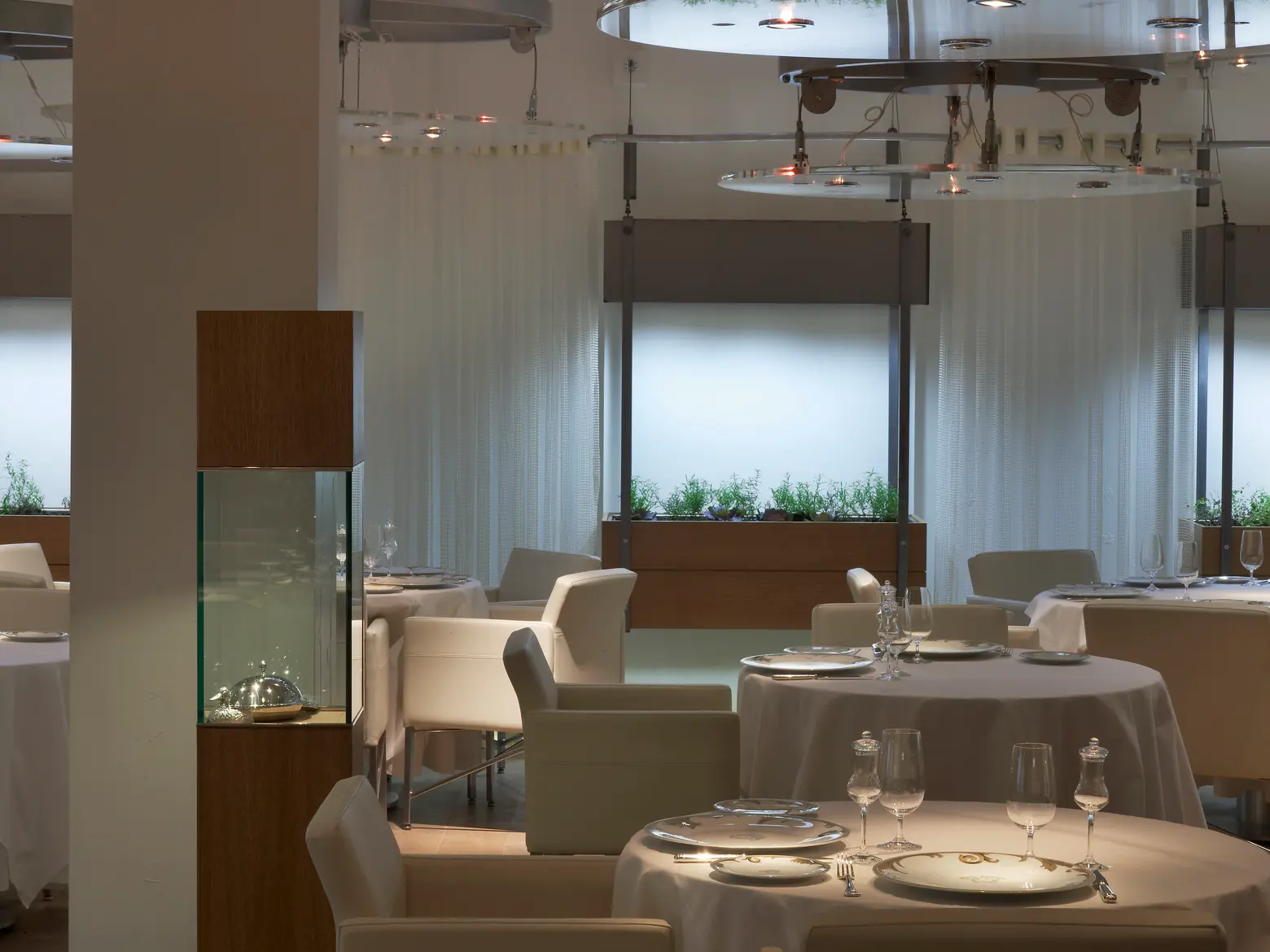
Romera Restaurant; photo by Oliver Brenneisen
It is the logic of laying out the restaurant that is common across any restaurant. From a hamburger joint, to a BBQ, to the restaurant in the House of Blues to a four-star restaurant in New York City, the common element is the logic how it is planned.
In all of your work and travels, is there one restaurant that was most inspirational?
The great thing about restaurants is that they are sort of like music. You remember places and times when you heard a certain soundtrack or smelled or tasted something. There are a few restaurants that do that for me but probably the one that sticks out most is Ruby Foo’s on the Upper West Side.
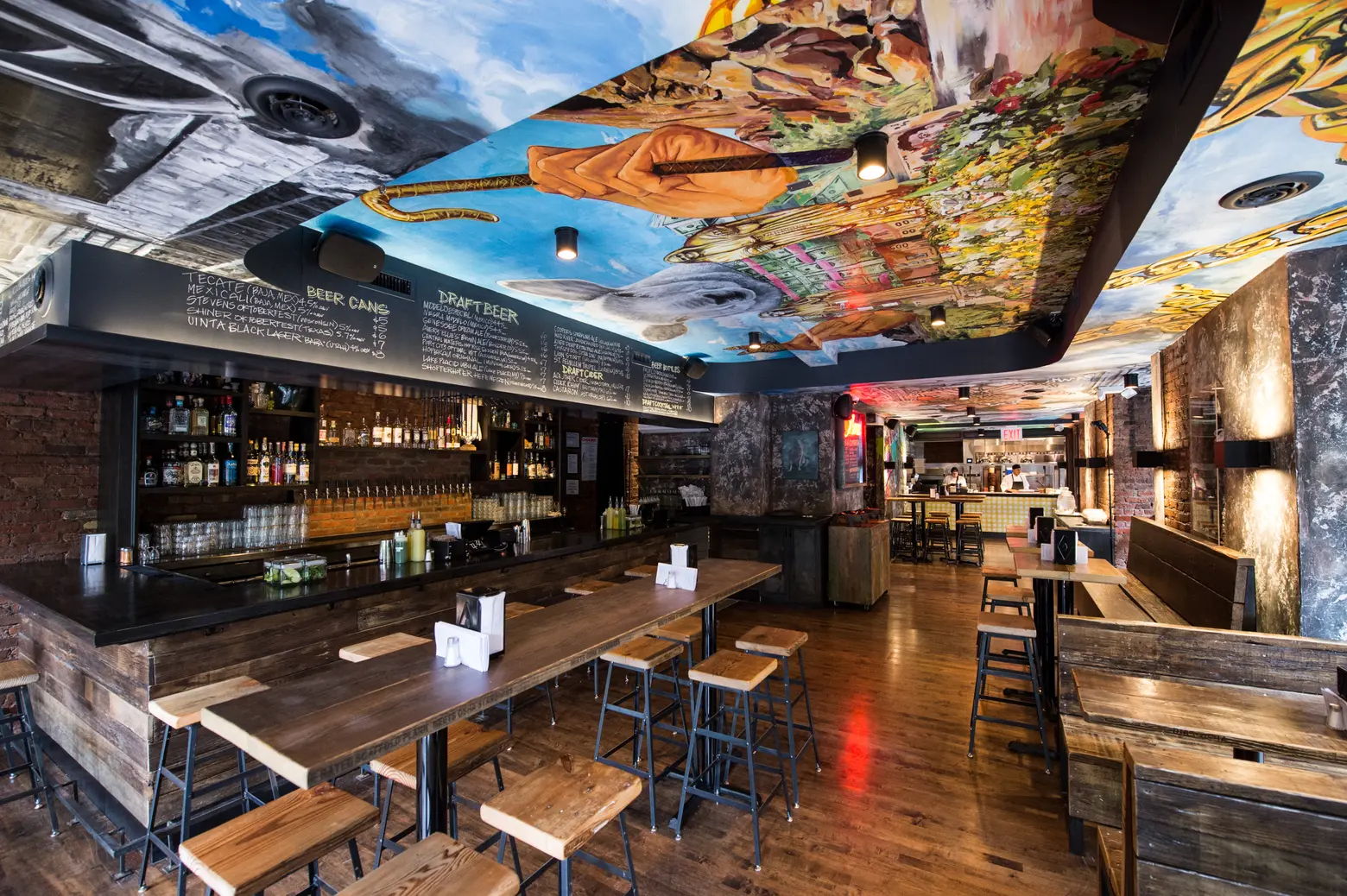
Empellon Al Pastor; photo by Evan Sung
The innovation of that restaurant was a magnificent staircase that David Rockwell created as theater. It was to get people to want to dine on the second floor. It was truly an innovation in design that was based upon real estate. The people who went there weren’t thinking of real estate. They were thinking about how do I get the best table? The best table happened to be on the second floor. That is a big memory for me.
The first time I dined at Montrachet, being exposed to wine that is very different and food that seemed familiar. I grew up going out to eat at fine dining but this was slightly different than what I had been exposed to. I remember almost every details about that place.
I’ve been to a lot of restaurants that through my travels with chefs. A standout is Washington Park with Jonathan Waxman. We went to London and Paris together and had a phenomenal meal at Arpege.
Can you name your the most inspirational chef you’ve worked with?
I have been blessed to work with so many incredible chefs, the guys at Major Food Group to Alex Stupak, to Gabriel Kreuther. Jonathan took a chance on me and I learned so much working with him. His influence had the greatest impact on me as far as my career.
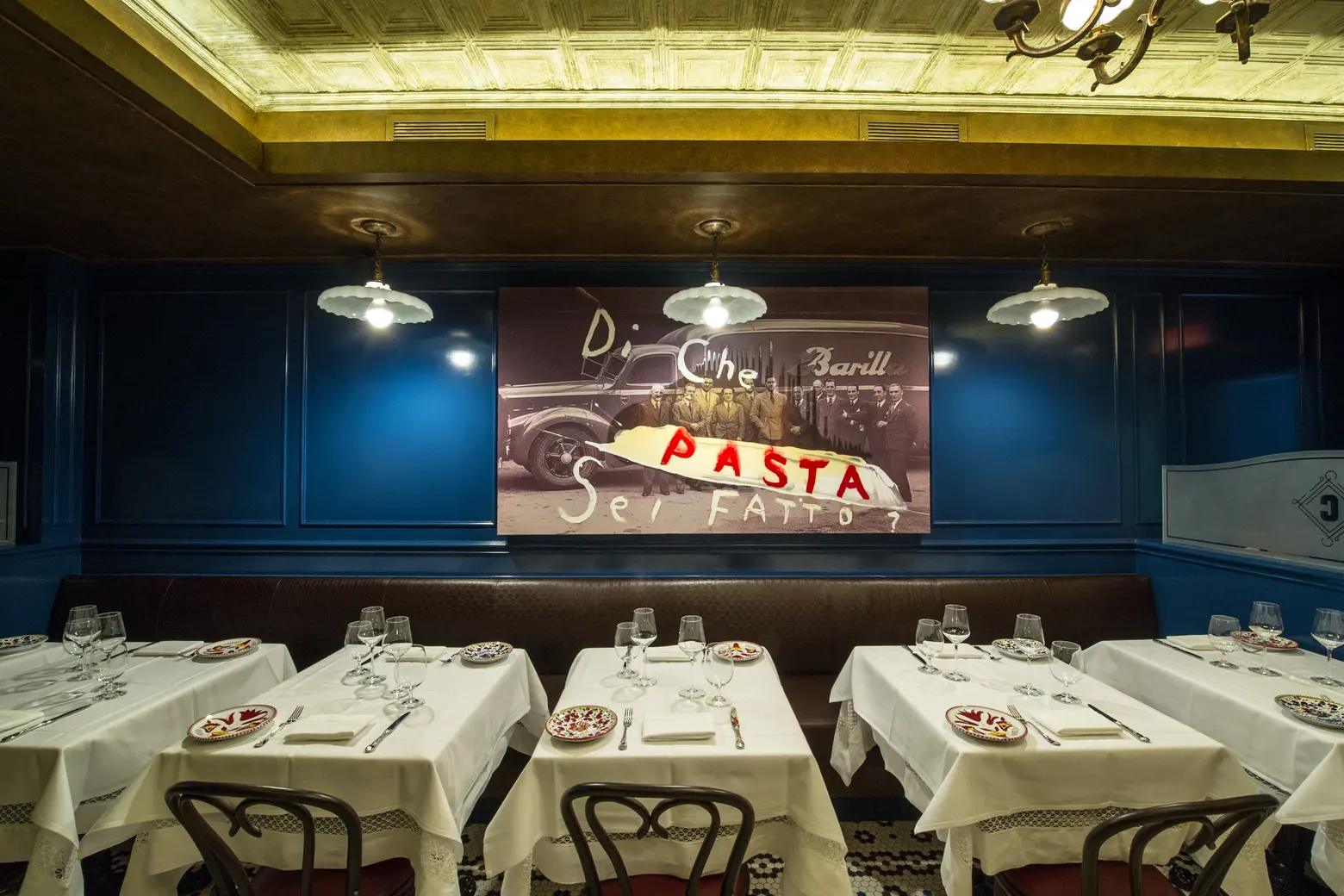
Carbone; photo by Daniel Krieger
One chef I would love to work with, consistently across the board, is Thomas Keller. I just love his story. The fact that he struggled in the beginning with the restaurant Rakel and then reset everything and reset himself and went out to Yountville and opened the French Laundry. Not many people remember the humble beginnings but I know he remembers. He seems like the kind of guy who remembers where he came from. I like that. The innovation is there but the history. Gabriel Kreuther appeals to me too, he paid his dues when he apprenticed the way I apprenticed. That was the classical way people did this. They worked under someone they really idolized for many years and learned everything they could learn. It’s inspirational.
What is your favorite food?
Italian. My mom passed away in January. I know my meatballs are far and away better than hers ever were but her Sunday sauce spaghetti and meatballs, as a Jewish mom living in the suburbs, that was the meal to end all meals.
I hope you can replicate it.
I know I can but my family has come to expect a little better. When I spend time with chefs, I always ask questions like how can I make my meatballs a little better?
Alex Stupak said, “add a little nutmeg.” I didn’t tell anyone I put that in but everyone looked up from their dish and said, “we loved your meatballs before but now they are crazy.” That nutmeg added a little defiance to them. That amazes me because not only are they innovative there are subtle little tweaks like hanging out with chefs and learning what acid can do to a dish.
Is there an architectural equivalent to adding acid to a dish?
For sure. We add little touches or accent colors on a chair piping or what we did at Cultivar, where the chef’s family were real revolutionary war aficionados and collectors. We bought vintage replica brass buttons from revolutionary war uniforms and used those as accents on the tufted banquets. Little things that not everybody will notice but for the one in ten that do, it brings a smile to their face.
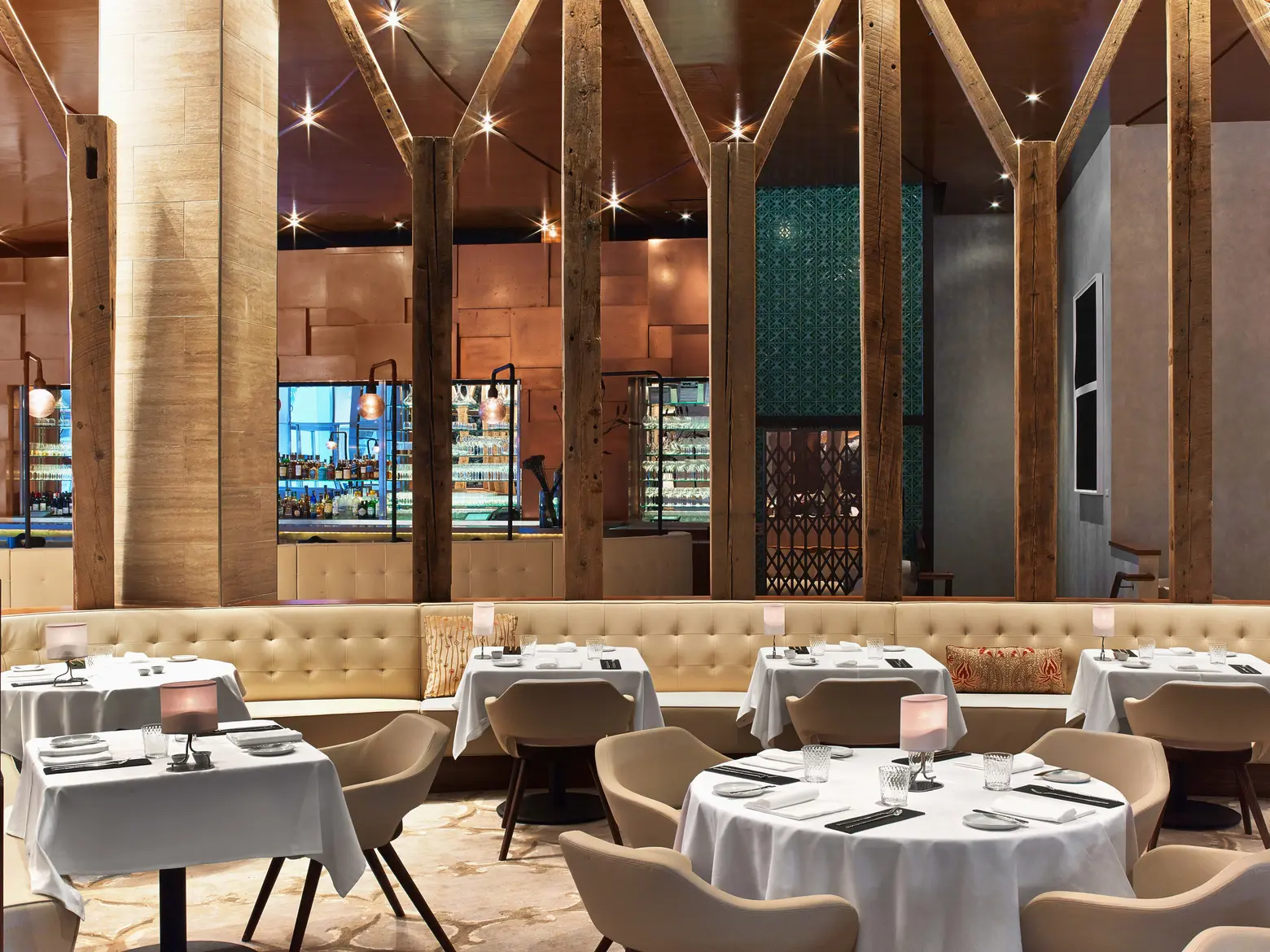
Gabriel Kreuther, photo by Eric Laignel
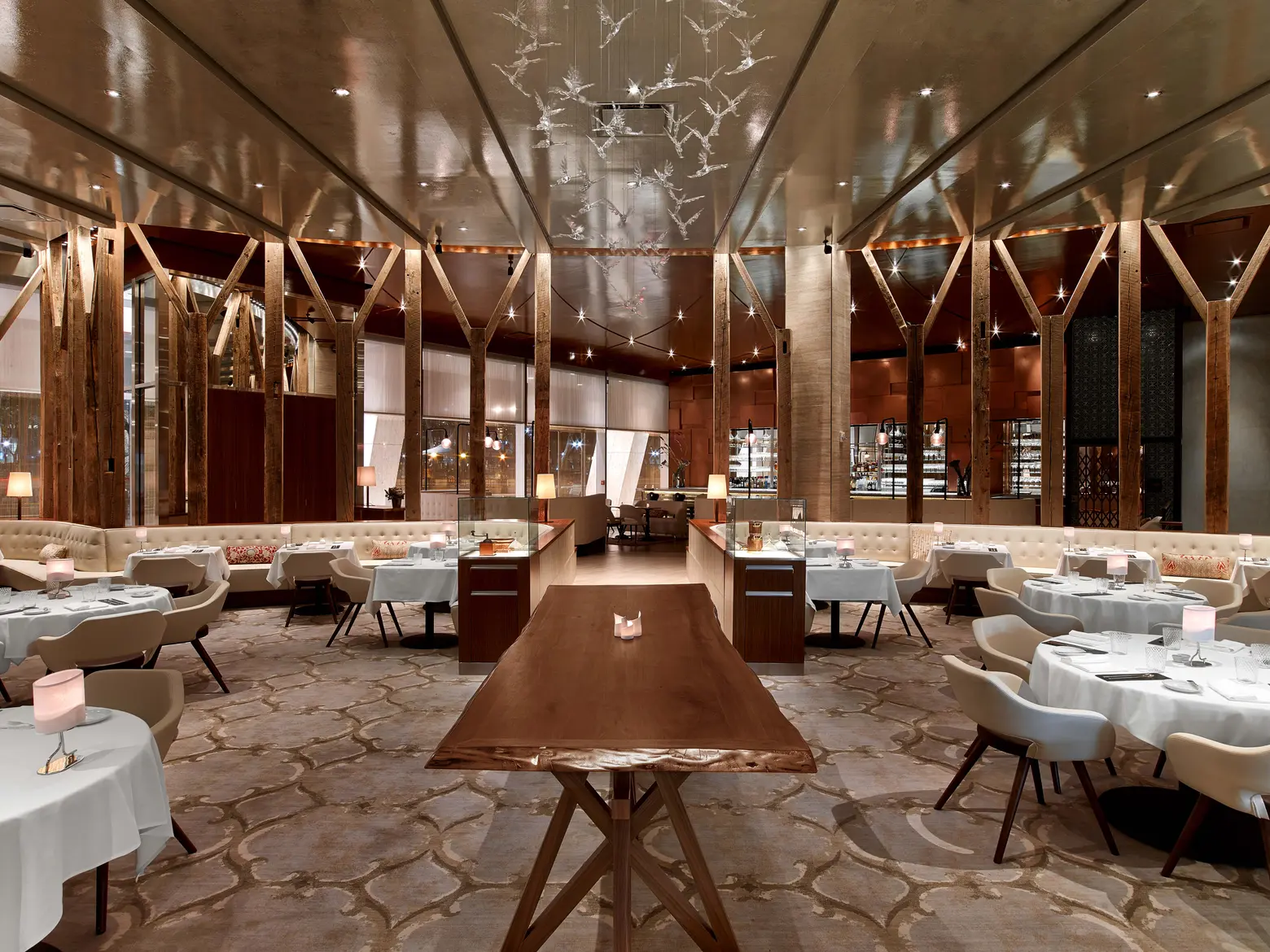
Gabriel Kreuther, photo by Eric Laignel
I always tell people one unsung hero in the New York City restaurant world is Shelly Fireman. Shelly said, “I want someone to smile and be delighted by my restaurant and understand that this is entertainment and not just a restaurant dining experience. It’s the whole experience.”
I always tell people restaurants are like triangles. A beautiful piece of geometry. If you take a triangle, one leg is food, one leg is service, one leg is design. If any one of those legs breaks, the integrity of the triangle is gone. I don’t think it’s an equilateral triangle. Design is important but not as important as the food or service but a part of the whole ensemble.
+++
RELATED:
- Where I Work: Tour FXCollaborative’s Flatiron architecture office with partner Dan Kaplan
- INTERVIEW: Lighting designer Joel Fitzpatrick on his desire to permanently illuminate Manhattan
- INTERVIEW: Author Julia Van Haaften on delving into the life of photographer Berenice Abbott
All images found in “An Architect’s Cookbook”
